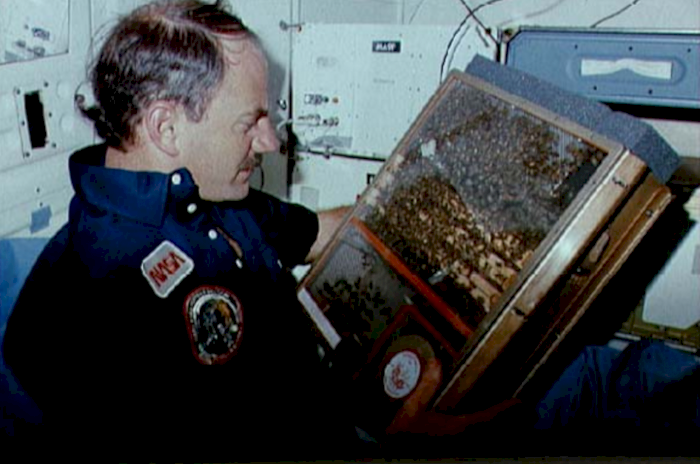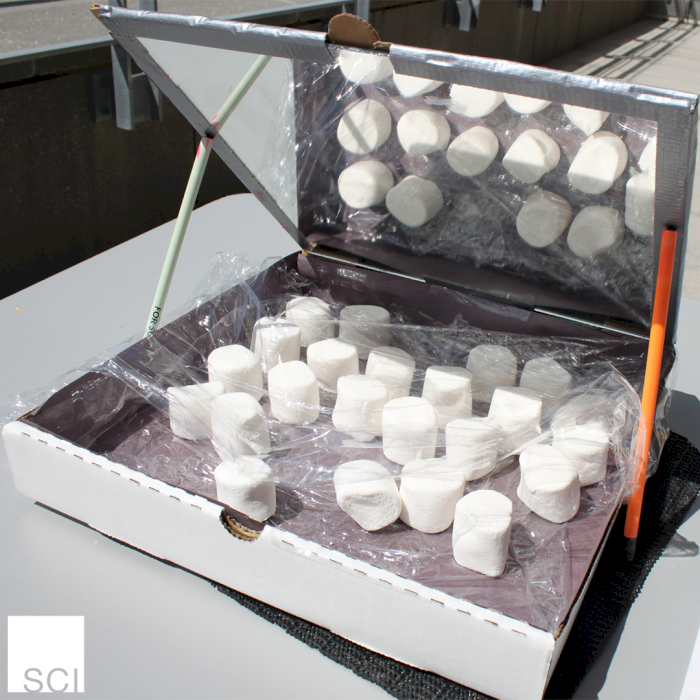Bees in Space!
- Wednesday June 24 2020
- General SCI
Make no mistake about it: Humanity has set its sights on sending people Mars!
However, there are countless challenges to overcome. How will they get there? How will the safely land? How will they stay safe from the harsh Martian environment? What will they breathe and drink?
And a big one... What will they EAT? Creating food on the surface of Mars, rather than bringing or delivering it, will be important for people that want to stay there for a long time.
One out of every three bites of the food people eat wouldn’t exist without the work of pollinators, which are animals that help plants reproduce by carrying pollen between them. Bees are among the most important pollinators, and they could be very helpful for creating sustainable Martian agriculture.
Could you imagine what a Martian farm would look like?
Fun fact: Using resources like water, oxygen and food that are created at an extra-terrestrial destination is known is "in situ resource utilization."
While about 570 humans have been to space, more than 3,500 bees have been to space! Here are a couple of times they made the journey:
In 1982, NASA sent about 50 insects into space, including 14 honeybees as a part of the Insect Flight Observations at Zero Gravity experiment. The scientists made observations about how well these insects could fly in zero-gravity. According to what they observed, honeybees had a lot of trouble figuring out how to fly! It might have been related the fact they couldn’t figure out where they were heading or perhaps they didn’t have high enough quality food. Check out the other details of the experiment here.
In 1987, NASA sent 3,500 bees with the A Comparison of Honeycomb Structures Built by Apis Millifera experiment. The scientists monitored how well the bees were able to create their honeycombs and found some very promising results! While a few of the bees died, they were able create honeycomb structures nearly identical to the ones bees make on Earth. The bees in the colony also seemed to be able to navigate around their module better than the ones in the 1982 experiment. Check out the other details of the experiment here.
These two experiments are more than 30 years old at this point and were part of NASA’s Shuttle Student Involvement Program (SSIP) that gave students the opportunity to propose experiments for flight on the now-retired Space Shuttle.
The most recent "bee-stronauts" took flight in 2013 during the Megachile rotundata Proprioception and Flight Patterns in Microgravity experiment that was aboard SpaceX CSR-15 (Commerical Resupply Service) mission. The students that designed this experiment selected a species of solitary bee known as alfalfa leafcutter bees. They differ from honeybees in that they don’t live in large colonies. Because of their solitary lifestyle, they happen to be super-efficient pollinators. You can see from this video that they seem to have some of the same problems flying that the honeybees experienced in 1982. Check out the other details of the experiment here.
There’s still so much to learn about how different types of pollinators might respond to zero or low gravity environments as well as enclosed space habitats. Understanding how they react to these environments can help us to plan for the future of horticulture and agriculture on Earth and space.
Maybe the key to helping them fly in these situations lies in raising these bees in space from the time they hatch from their eggs. Or perhaps we’ll need to replicate earthbound forces while we’re in space so these pollinators will be able to get around.
Can you think of any other ways these bees could be helped to fly in space?


